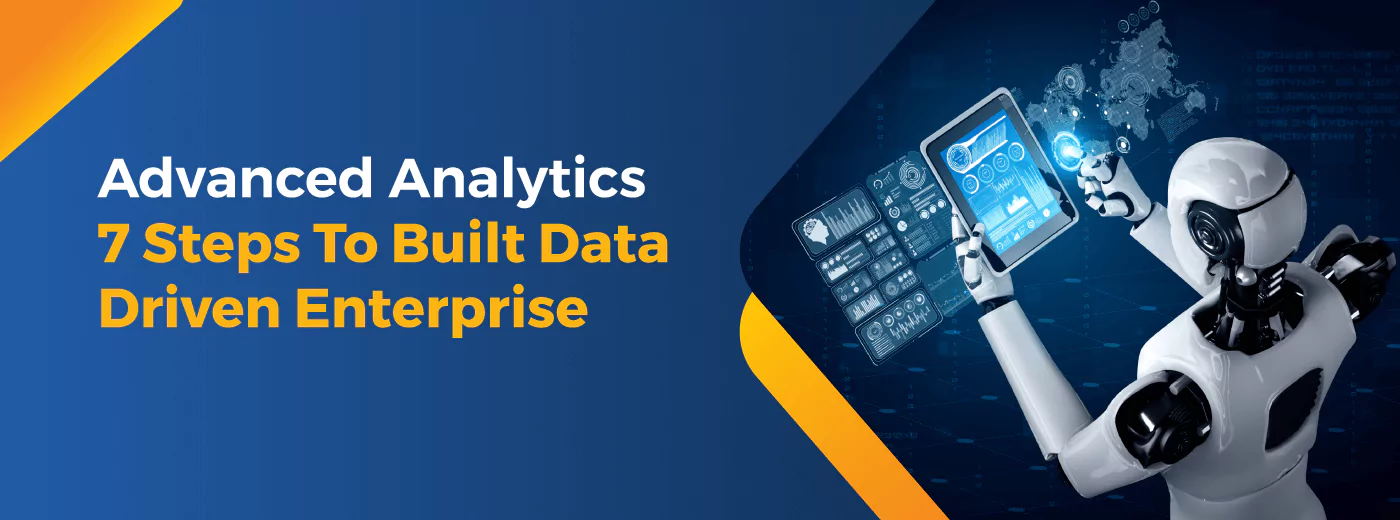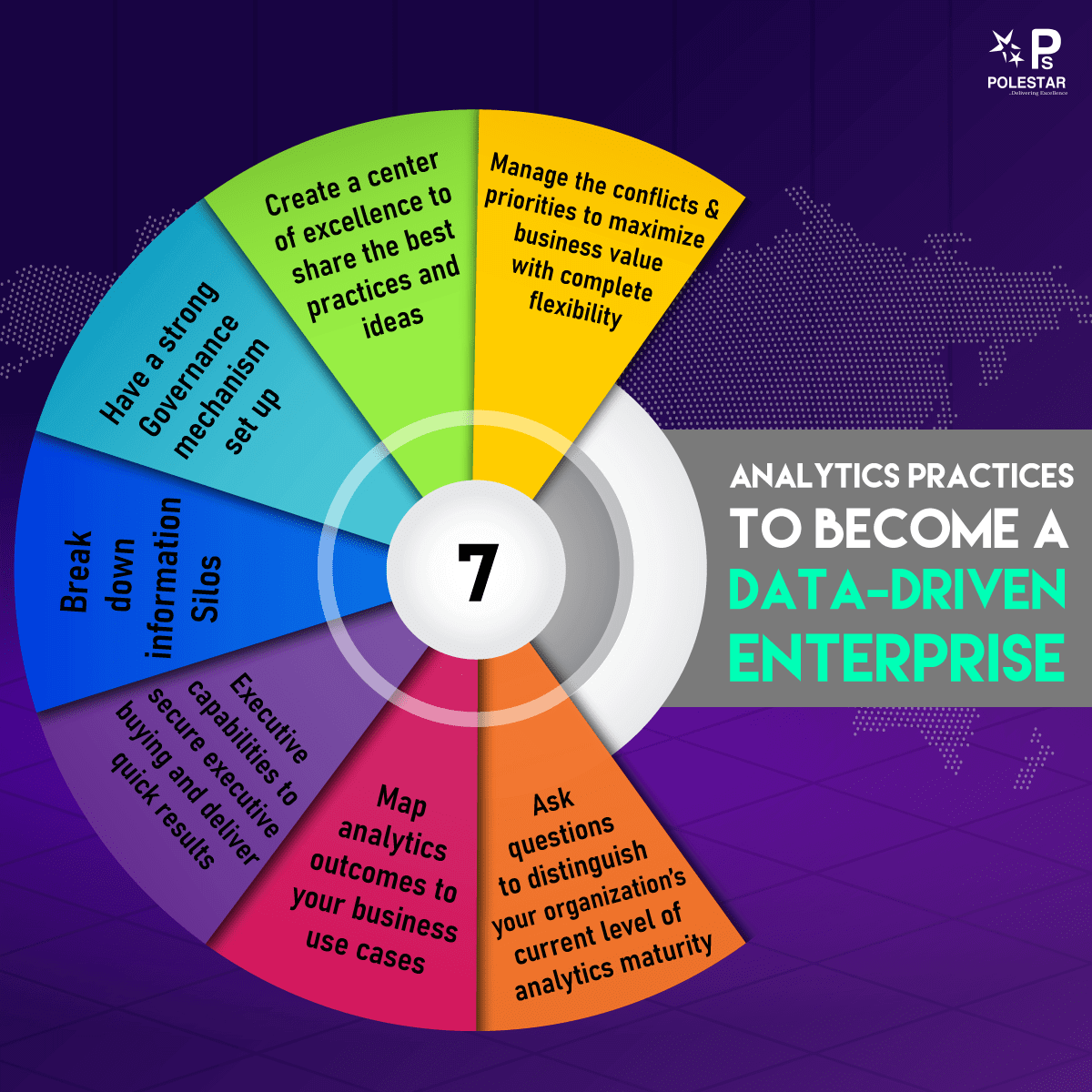
Sign up to receive latest insights & updates in technology, AI & data analytics, data science, & innovations from Polestar Analytics.
What differentiates enterprises in today’s highly competitive markets is their ability to make accurate, timely, and effective decisions in all aspects to address their customers’ preferences and priorities. Businesses across the globe have started using advanced data analytics solutions to analyze their data by combining information on past circumstances, present events, and projected future outcomes. By incorporating it into their daily operations, these companies gain control over the decisions they make daily so that they can successfully meet their business goals.
The advanced data analytics allow companies to have a “360-degree” view of their operations and customers. The insight that they gain from such analysis is then used to direct, optimize, and automate their decision making with a wide range of analytics tools and techniques such as data/text mining, machine learning, pattern matching, visualization, forecasting, semantic analysis, sentiment analysis, network, and cluster analysis, multivariate statistics, graph analysis, complex event processing, and neural networks.
Building a data-driven enterprise is crucial in the current business environment for numerous reasons:
Improved Decision-Making: Data-driven decision-making cut short the reliance on intuitions. Instead, decisions are based on objective analysis of apt data. Enterprises can decrease uncertainty, mitigate risks, and optimize outputs by utilizing data to drive decision-making processes in a straight forward way.
Enhanced Customer Understanding: Data offers invaluable insights into consumer behavior, preferences, and requirements. By analyzing customer data, companies can personalize marketing efforts, understand their target audience better, develop targeted services and products, and deliver exceptional CX. This leads to climbing customer satisfaction, loyalty, and, ultimately, higher ROIs.
Operational Efficiency: Data-driven approaches optimize business operations. Companies can streamline processes, identify inefficiencies, and increase productivity by analyzing data from disparate sources. Data analytics can also assist in inventory management, optimizing supply chains, resource allocation, and predictive maintenance, leading to cost efficiency and improved operational performance.
Innovation and Agility: Data-driven organizations are more responsive and adaptable to market changes. Enterprises can continuously analyze and monitor data to identify market opportunities, emerging trends, and potential disruptions. This allows them to swiftly adapt their strategies, develop innovative services or products, and seize new business opportunities before their competitors.
Data Security and Compliance: Data security and compliance have become significant concerns in today's digital landscape. Building a data-driven enterprise involves:
By proactively addressing data security and compliance needs, enterprises can protect their reputation, build customer trust, and avoid financial and legal repercussions.
So, the capability to harness the power of data is no longer just an option—it's an absolute necessity. Enterprises that fail to build a data-driven enterprise risk falling behind, while those that embrace the data revolution unlock a world of possibilities. By leveraging data to obtain insights, make informed decisions, and adapt to changing market dynamics, enterprises can position themselves at the forefront of innovation, outpace their competitors, and secure long-term success.

Today, technologies such as mobile, cloud, and the Internet Of Things are creating humongous amounts of big data in the form of structured and unstructured data—but many organizations are held back by data silos. Building a data-driven business depends on developing data analytics competencies that can convert data into valuable information to drive real-time decision-making.
Check out our expertise in Advanced Data Analytics to find the services that would be suitable for your needs
EXPLORE OUR SERVICESUnderstand where you are on the journey. Ask questions to distinguish your organization’s current level of analytics maturity, and work with IT to uncover what data is already available to analyze.
Today, investing in advanced data analytics has become a rising trend that is expected to go further up in the future. This is because of the new dimension that is being added to it and with the involvement of advancing technologies like artificial intelligence, predictive modeling, machine learning, etc.
So, with the help of these technological advancements, any organization can easily re-establish its business success. We, at Polestar as an advanced analytics solutions company, can help you achieve this goal
About Author

Content Architect
The goal is to turn data into information, and information into insights.